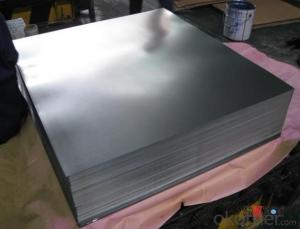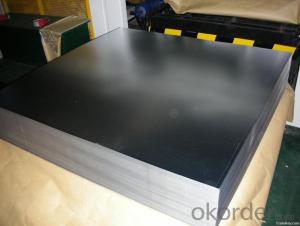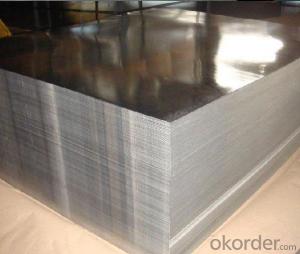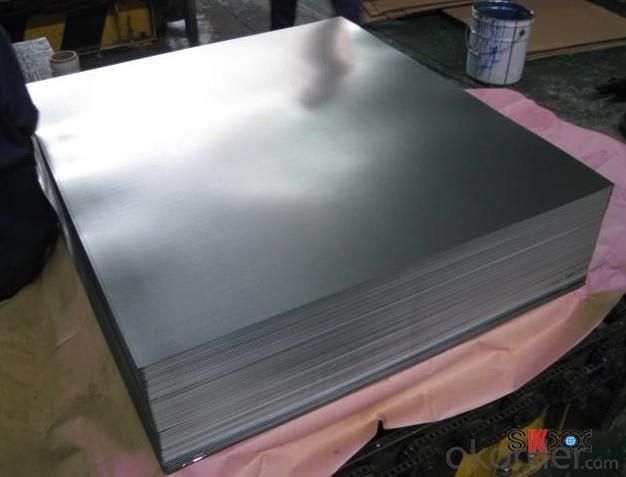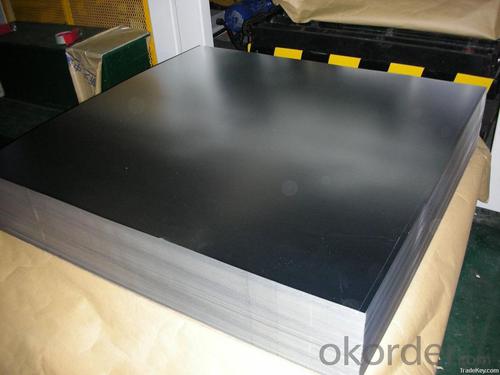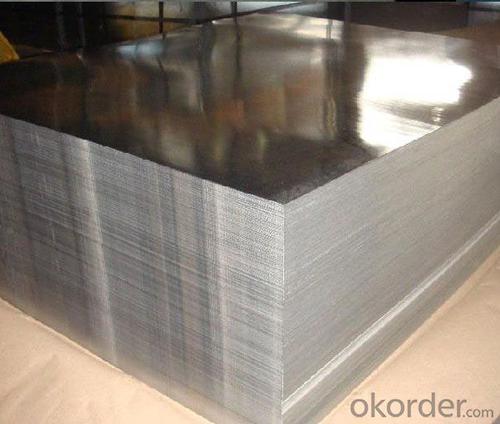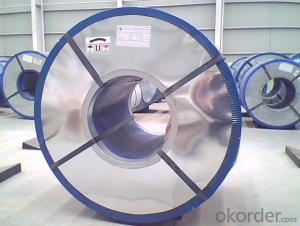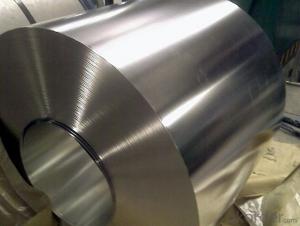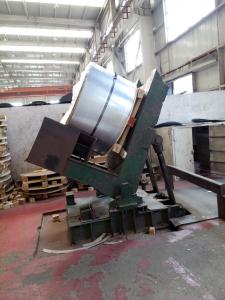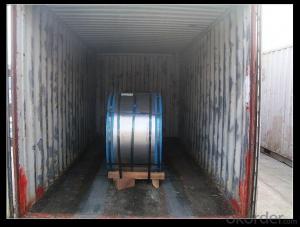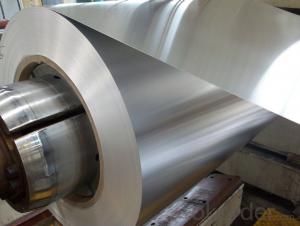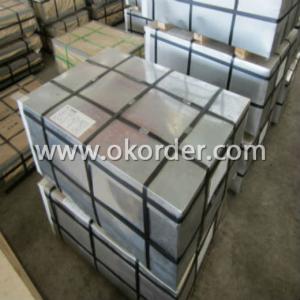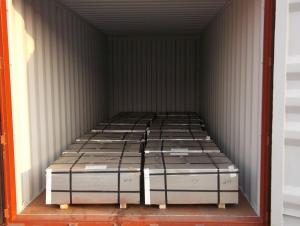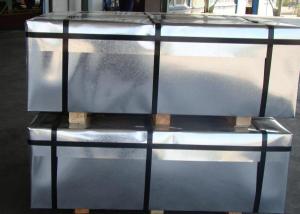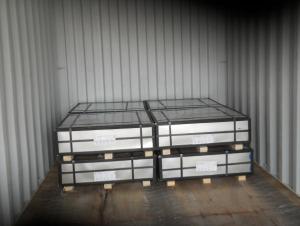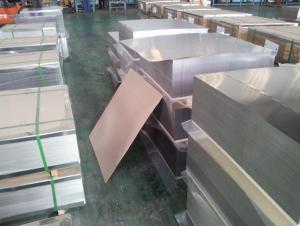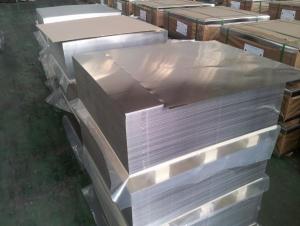Electrolytic Tinplate Coils for Foods Packaging
- Loading Port:
- Tianjin
- Payment Terms:
- TT OR LC
- Min Order Qty:
- 25 m.t
- Supply Capability:
- 7000 m.t/month
OKorder Service Pledge
OKorder Financial Service
You Might Also Like
1.Structure of Electrolytic Tin Plate Coils and Sheets for Foods Metal Packaging Description
Electrolytic Tin Plate Coils and Sheets for Foods Metal Packaging, is one thin steel sheet with a coating of tin applied by electrolytic deposition. Tinplate made by this process is essentially a sandwich in which the central core is strip steel. This core is cleaned in a pickling solution and then fed through tanks containing electrolyte, where tin is deposited on both sides. As the strip passes between high-frequency electric induction coils, it is heated so that the tin coating melts and flows to form a lustrous coat.
2.Main Features of the Electrolytic Tin Plate Coils and Sheets for Foods Metal Packaging
Appearance – Electrolytic Tin Plate is characterized by its beautiful metallic luster. Products with various kinds of surface roughness are produced by selecting the surface finish of the substrate steel sheet.
Paintability and printability – Electrolytic Tin Plates have excellent paintability and printability. Printing is beautifully finished using various lacquers and inks.
Formability and strength – Electrolytic Tin Plates have got very good formability and strength. By selecting a proper temper grade, appropriate formability is obtained for different applications as well as the required strength after forming.
Corrosion resistance – Tinplate has got good corrosion resistance. By selecting a proper coating weight, appropriate corrosion resistance is obtained against container contents. Coated items should meet 24 hour 5 % salt spray requirement.
Solderability and weldability – Electrolytic Tin Plates can be joined both by soldering or welding. These properties of tinplate are used for making various types of cans.
Hygienic – Tin coating provides good and non toxic barrier properties to protect food products from impurities, bacteria, moisture, light and odours.
Safe – Tinplate being low weight and high strength makes food cans easy to ship and transport.
Eco friendly – Tinplate offers 100 % recyclability.
Tin is not good for low temperature applications since it changes structure and loses adhesion when exposed to temperatures below – 40 deg C.
3.Electrolytic Tin Plate Coils and Sheets for Foods Metal Packaging Images
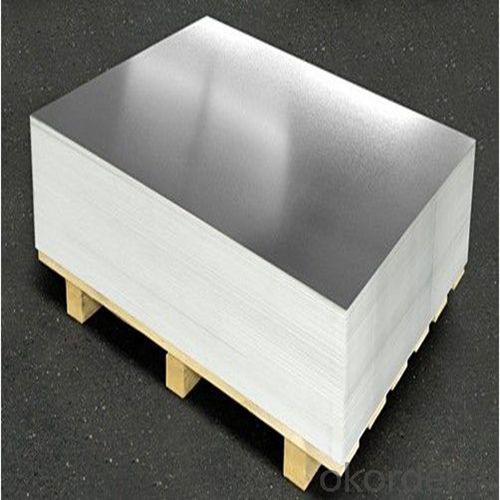
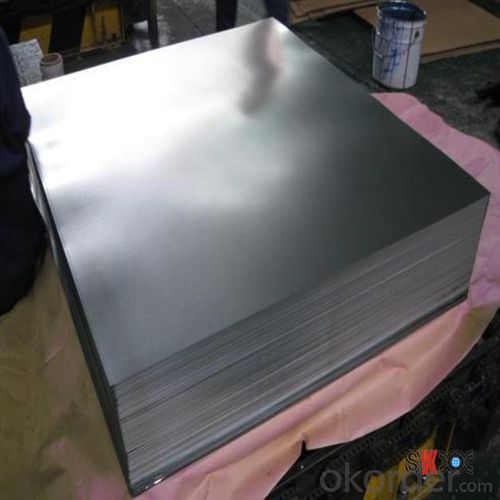
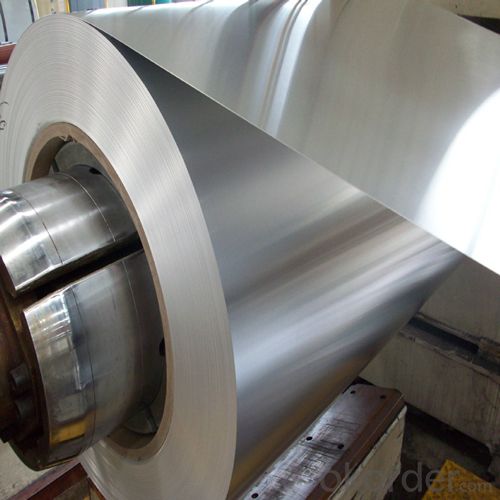
4.Electrolytic Tin Plate Coils and Sheets for Foods Metal Packaging Specification
Standard | ISO 11949 -1995, GB/T2520-2000,JIS G3303,ASTM A623, BS EN 10202
|
Material | MR,SPCC |
Thickness | 0.15mm - 0.50mm |
Width | 600mm -1150mm |
Temper | T1-T5 |
Annealing | BA & CA |
Coil Inner Diameter | 508mm |
Weight | 6-10 tons/coil 1~1.7 tons/sheets bundle |
Passivation | 311 |
Oil | DOS |
Surface | Finish,bright,stone,matte,silver |
5.FAQ of Electrolytic Tin Plate Coils and Sheets for Foods Metal Packaging
-What your tinplate material is used for ?
Tinplate is widely used for the packaging of products. Such as food cans,
beverage cans, pet cans, closures, general line cans and so on.
Printed Tinplate is offered!!
-How to place .an order or contact you ?
Please send us Email. we will give you a quick response in seconds .
- How is your quality ?
All our quality is prime even the secondary quality . We have many years experience
In this field with serious quality control standard . Advanced equipment, We welcome your visit to our factory .
- Q: What are the advantages of using tinplate for pharmaceutical packaging?
- There are several advantages of using tinplate for pharmaceutical packaging. Firstly, tinplate is highly resistant to corrosion, ensuring the integrity and safety of the pharmaceutical products. Secondly, tinplate provides excellent barrier properties, protecting the contents from moisture, light, and oxygen, which can degrade the quality and efficacy of medications. Additionally, tinplate is sturdy and durable, providing adequate protection during transportation and storage. Finally, tinplate is easily recyclable, making it an environmentally friendly choice for pharmaceutical packaging.
- Q: What are the common thicknesses of tinplate used for different applications?
- The common thicknesses of tinplate used for different applications range from 0.13mm to 0.49mm.
- Q: What are the main countries producing tinplate?
- The main countries producing tinplate are China, Japan, and the United States.
- Q: How does tinplate affect the taste and quality of food?
- Tinplate is commonly used in the packaging of food due to its protective properties. It acts as a barrier against air, moisture, and light, preventing contamination and spoilage of the product. However, tinplate can potentially affect the taste and quality of food if there is any interaction between the metal and the food. This can occur when acidic or salty foods come into contact with the tin coating, leading to a metallic taste. To prevent such issues, tin coatings are often lined with a layer of enamel or lacquer to create a barrier between the food and the metal. Additionally, strict regulations and quality control measures are in place to ensure that tinplate used in food packaging is safe and does not compromise the taste or quality of the food.
- Q: What are the different types of tinplate coatings?
- The different types of tinplate coatings include electrolytic tinplate (ETP), tin-free steel (TFS), and black plate.
- Q: Tin and tinSince the back skin as long as tinplate will rust, so why not replace tin?
- Tin and tin, are plated plate, is a low carbon steel sheet, and metal coating. Electroplating and hot plating respectively.The difference between the two plates is that the former tin plated, the latter galvanized, because the two kinds of metals have different chemical properties, so their anti-corrosion ability and use is not the same
- Q: What are the regulations and standards related to tinplate packaging?
- The regulations and standards related to tinplate packaging vary depending on the country and industry. However, some common regulations and standards include specifications on the composition and thickness of tinplate, labeling requirements for product information and safety warnings, guidelines for food contact materials, and regulations for recycling and environmental sustainability. It is important for manufacturers and suppliers to comply with these regulations to ensure the safety and quality of tinplate packaging.
- Q: How does tinplate contribute to the efficiency of energy systems?
- Tinplate contributes to the efficiency of energy systems by providing a durable and lightweight material that can be used in various components such as cans, containers, and packaging. It helps in preserving and protecting energy resources, reducing energy consumption during transportation, and improving overall energy efficiency in the storage and distribution of goods. Additionally, tinplate is recyclable, which further supports sustainable energy practices and reduces waste in the energy system.
- Q: Can tinplate packaging be used for pharmaceutical products?
- Yes, tinplate packaging can be used for pharmaceutical products. Tinplate is a commonly used material in the pharmaceutical industry due to its durability, corrosion resistance, and ability to protect products from light, moisture, and external contaminants. Additionally, tinplate packaging provides an excellent barrier to oxygen and maintains the quality and integrity of pharmaceutical products.
- Q: Can tinplate packaging be used for home decor products?
- Yes, tinplate packaging can be used for home decor products. Tinplate is a versatile material that can be molded into various shapes and sizes, making it suitable for packaging home decor items such as candles, ornaments, and small decorative accessories. Additionally, tinplate packaging offers a unique and aesthetically pleasing appearance that can enhance the overall presentation of home decor products.
Send your message to us
Electrolytic Tinplate Coils for Foods Packaging
- Loading Port:
- Tianjin
- Payment Terms:
- TT OR LC
- Min Order Qty:
- 25 m.t
- Supply Capability:
- 7000 m.t/month
OKorder Service Pledge
OKorder Financial Service
Similar products
Hot products
Hot Searches
Related keywords
